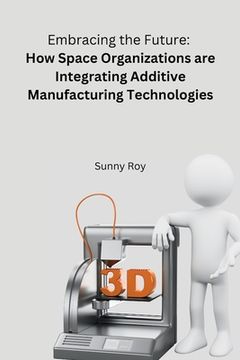Share
Embracing the Future: How Space Organizations are Integrating Additive Manufacturing Technologies (in English)
Roy Sunny
(Author)
·
Noya Publishers
· Paperback
Embracing the Future: How Space Organizations are Integrating Additive Manufacturing Technologies (in English) - Sunny, Roy
$ 23.57
$ 27.99
You save: $ 4.42
Choose the list to add your product or create one New List
✓ Product added successfully to the Wishlist.
Go to My WishlistsIt will be shipped from our warehouse between
Friday, June 28 and
Monday, July 01.
You will receive it anywhere in United States between 1 and 3 business days after shipment.
Synopsis "Embracing the Future: How Space Organizations are Integrating Additive Manufacturing Technologies (in English)"
Embracing the Future: How Space Organizations are Integrating Additive Manufacturing Technologies The rapidly evolving technology known as additive manufacturing (AM), or 3D printing, is significantly influencing a number of industries, including the space sector. For the production of spacecraft, satellites, and other space-faring vehicles' components and subsystems, space organizations are progressively adopting additive manufacturing (AM) technology.AM provides space companies with several advantages, such as down costs By doing away with the need for pricey tooling and machining, additive manufacturing (AM) can help down the cost of producing space components.Greater versatility: Additive manufacturing (AM) offers space companies the ability to build complex and customized components that would be difficult or impossible to produce using traditional methods. This flexibility extends to both design and manufacturing.Lighter components: AM can be used to create components that are lighter, which is crucial for space applications where weight is a vital consideration.Strength, stiffness, and durability are examples of components with better performance attributes that can be produced with AM.AM technologies are being integrated by space organizations in a number of ways. For instance, AM is being used by several space organizations to create prototypes of new subsystems and components. They can now test and validate new designs more rapidly and effectively as a result. AM is being used by several space agencies to manufacture spacecraft and satellite production parts.In the upcoming years, there will likely be a major increase in the use of AM in the space sector. AM technologies will become more affordable and able to produce a larger variety of parts and subsystems as they advance and mature. Because of this, AM will become an even more alluring choice for space organizations.The adoption of AM technology is also being fueled by the growing trend of commercial space exploration. The goal of commercial space firms is to find methods to shorten the time and expense of developing and launching new spacecraft. AM can assist them in achieving these objectives.All things considered, the adoption of AM technologies by the space sector represents a noteworthy advancement. AM has the power to completely change how satellites and spacecraft are created and built.
- 0% (0)
- 0% (0)
- 0% (0)
- 0% (0)
- 0% (0)
All books in our catalog are Original.
The book is written in English.
The binding of this edition is Paperback.
✓ Producto agregado correctamente al carro, Ir a Pagar.

